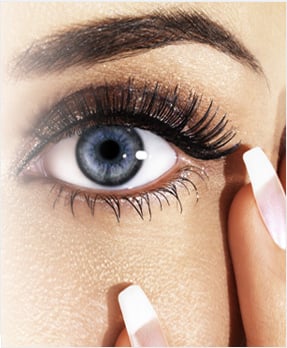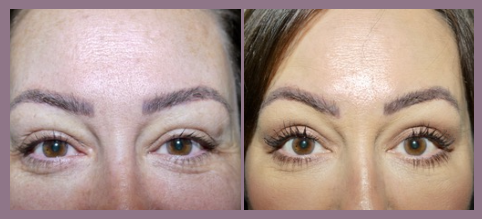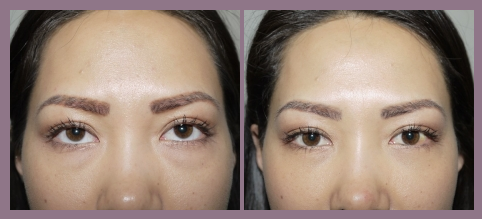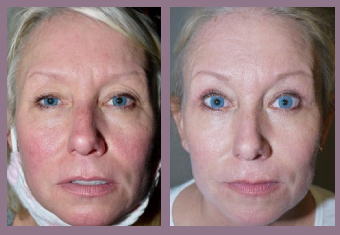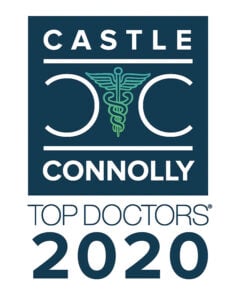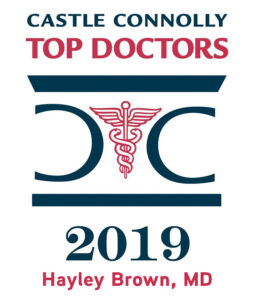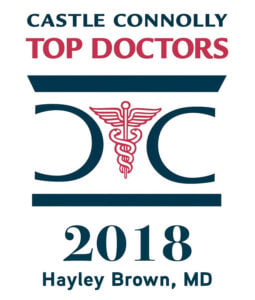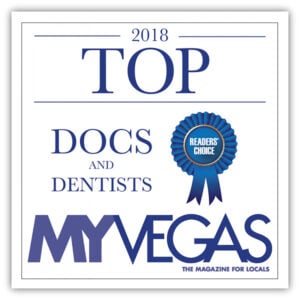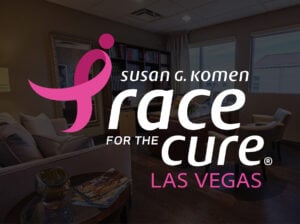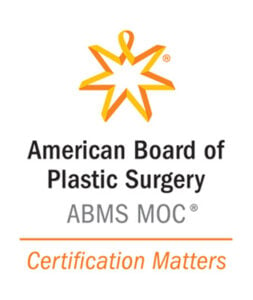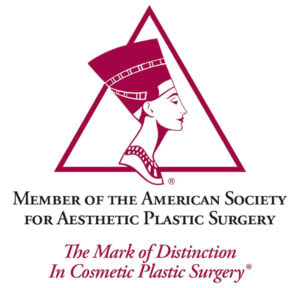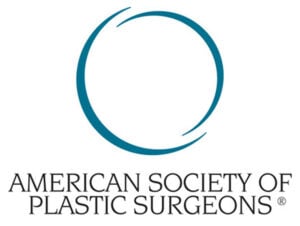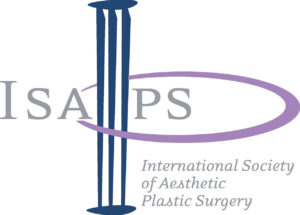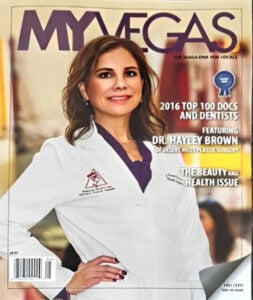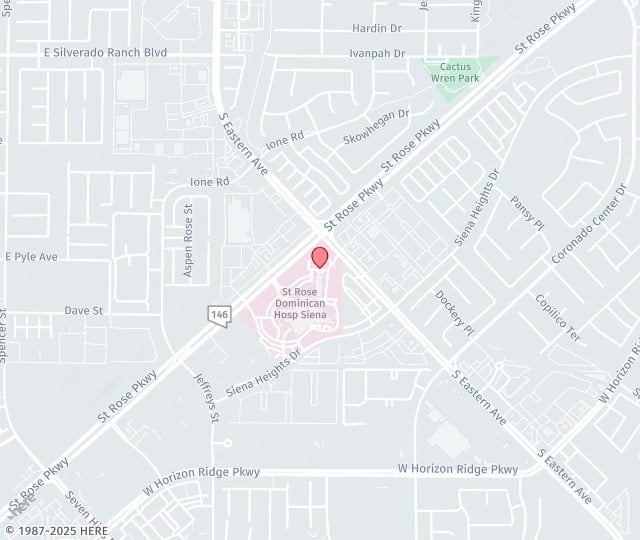Board Certified Female Plastic Surgeon Specializing in Cosmetic Eyelid Surgery
Medical Terms:
Blepharoplasty: Eyelid Surgery or Eyelid Lift
Ptosis: Droopy upper eyelid related to weak muscle holding up the upper eyelid
Periorbital: Around the eye
Transconjunctival: Approach to eyelid surgery from inside the eye with no external scar
Ask anyone, "What's the first thing you notice when you meet someone?" They'll likely say the eyes.
The eyes are the most expressive sensory structures on the face. They reveal our feelings, our openness, mood, and character. For that reason, facial surgery around the eyes needs to be performed conservatively, naturally, and with precision.
Do you want to learn more about eyelid surgery (medically known as blepharoplasty)? If so, please call Desert Hills Plastic Surgery Center in Las Vegas at 702-260-7707 to arrange a consultation.
Why Blepharoplasty?
As we age, eye appearance changes from gravity, fatty tissue fluctuation, and regular facial expression. Eyes that were once open, relaxed, inviting, and youthful become droopy, wrinkled, strained, and tired-looking despite the fact that our inner selves are the same. Patients complain of a tired appearance, wrinkles around the eyes, heaviness of the upper eyelids, difficulty-applying makeup, and in severe situations, even difficulty with peripheral vision.
Besides the natural aging process, anatomic factors and genetics also predispose certain individuals to seek out the help of Dr. Hayley Brown in improving the appearance of the eyes. Both young and old individuals complain of dark circles or "bags" under the eyes. The eyebrows can be naturally low or descend over time and contribute to the appearance of excess skin or fullness involving the upper eyelids. The cheek pad can also descend over time or loose volume, unmasking underlying orbital anatomy, creating a hollow and "skeletonized" look. Lastly, the upper eyelid muscles can be weak; causing a droopy upper eyelid related to muscle function and not skin excess.
What Is Involved With Eyelid Surgery?
Blepharoplasty eyelid surgery is a common procedure used to reverse signs of aging and restore a youthful, well-rested look. It involves removal of redundant skin and/or fat from the upper and lower eyelids. It does not change certain anatomic conditions which can contribute to tired-looking eyes.
In patients whose low eyebrows contribute to the upper eyelid fullness, a brow lift procedure may be indicated. In patients with dark circles from hollowness, ideally the addition of volume to that area is the best treatment. In patients with droopy (ptotic) upper eyelids from muscle weakness, upper eyelid muscle surgery is recommended.
Dr. Brown will help you determine the best treatment plan for your condition and goals. Natural looking results are key after eyelid surgery. Surgery needs to be done inconspicuously and conservatively, preserving your natural eye appearance and shape so you look like yourself, only years younger. Preservation of fatty tissue in many cases is desired, to maintain a youthful look, and decrease risks for volume deficiency and hollowness of the eyelids as you continue to age.
Is It Possible To Combine Eyelid Surgery With Other Procedures?
Eyelid surgery is often combined with other facial procedures to achieve the best results. Upper eyelid surgery pairs well with a brow lift because the two create a balanced and well-rested look. It is also included in surgical plans for complete facial rejuvenation. These surgical plans tend to feature eyelid surgery alongside a facelift surgery and neck lift as well as other individualized options. Our board-certified plastic surgeon will help you select the right procedures to meet your needs.
How Much Does Eyelid Surgery In Las Vegas Cost?
Eyelid surgery performed by Dr. Hayley Brown starts at $6,500 if you are having either the upper OR lower eyelids treated. When both upper and lower eyelids are treated, the cost starts at $9,500.
Who Is A Candidate For Eyelid Surgery?
- A person with excessive wrinkling in the skin of the upper and lower eyelids
- Someone with puffy bags under the eyes making him or her look tired
- Individuals with droopy upper lids from skin excess or fat
- A person with a compromised visual field
- Individuals with prominent globes, lower eyelid looseness or laxity, generalized hollowness or depressions contributing to dark circles, and severe dry eye problems may not be candidates for blepharoplasty surgery
What Is The Goal Of Eyelid Surgery?
- A more youthful and rested appearance
- Maintenance of current eye shape
- Stability or improvement in lower eyelid position and support
- Naturalness
- Symmetry, although perfect symmetry is unrealistic
- Improved vision if excess upper eyelid skin was interfering with sight
- Longevity in the result
- Non-visible scars
- Do not expect complete eyelid wrinkle eradication, but softening. Conservative skin excision must be done to ensure complete eyelid closure after surgery
How Is The Blepharoplasty Procedure Performed?
- This facial procedure is done on an outpatient basis under general anesthesia or local anesthesia with light sedation. General anesthesia is preferred for patient comfort and cooperation, as this is a very sensitive and delicate area
- Incisions are made in the upper and lower eyelids following the natural contour lines and creases. Skin and sometimes excess fat are removed, the lower eyelid is supported, and the incisions are closed with very fine suture. Surgery is individualized per patient to correct the issue at hand, whether it be skin only, skin and muscle, fat, or a combination of interventions
- Dr. Brown always lifts and tightens the lower lid so that rounding of the lower lid does not occur and the lower lid remains well-positioned and youthful looking
- In patients with fatty tissue bags of the lower eyelid, and good overlying skin tone, a Transconjunctival Blepharoplasty can be performed. This means that there is no external scar and no skin take-out. Only fatty tissue is removed from the eyelid from an approach inside the eyelid
Are There Any Risks To Eyelid Surgery?
Eyelid surgery is considered safe and has minimal side effects. The most common side effects include temporary swelling, bruising, bleeding, and discomfort. Dry eye can also occur or get worse in some patients, and treating this issue may require medicated eye drops. Poor functional and cosmetic outcomes are one of the most serious concerns.
For example, it is possible to remove too much skin, making it hard to close your eyes all the way. Meanwhile, removing too much fat can create a hollow look that is likely to worsen with age. Risks are more common in the hands of an inexperienced surgeon who lacks proper training.
They are also more common when blepharoplasty is performed on poor candidates. The eyelids are delicate structures, and operating on them requires favorable anatomy. Dr. Hayley Brown is not afraid to tell someone when she thinks they will not benefit from blepharoplasty. If that happens to you, you can expect her to walk you through some potential alternatives to eyelid surgery, which may include laser skin treatments and makeup.
What People Say About Us!
"Dr Brown is amazing. I am very happy with my results. Her staff was attentive and professional, I couldn’t have asked for more."
Click here to read more reviews.
How Do I Prepare For Eyelid Surgery?
Eyelid surgery patients will receive a specific set of pre-operative guidelines from our practice. In preparation for your upper or lower blepharoplasty, you may be asked to:
- Get lab testing or a medical evaluation
- Get an ophthalmologic exam and testing to rule out dry eyes
- Discontinue blood-thinning medications and supplements
- Stop smoking and using tobacco products
- Follow dietary instructions
- Arrange for a friend or relative to drive you home
Remember that these instructions are in place for your safety and satisfaction. Not only do they help prevent side effects and complications, but they also help to ensure great surgical results.
Is Surgery Painful?
Eyelid surgery is less painful than many other cosmetic procedures. It is performed under local anesthesia with light sedation or general anesthesia to maximize patient comfort during surgery. The recovery is generally very well tolerated. It is common to experience mild discomfort. Oral pain medication, ice compresses, and light massage as directed can help you feel much better.
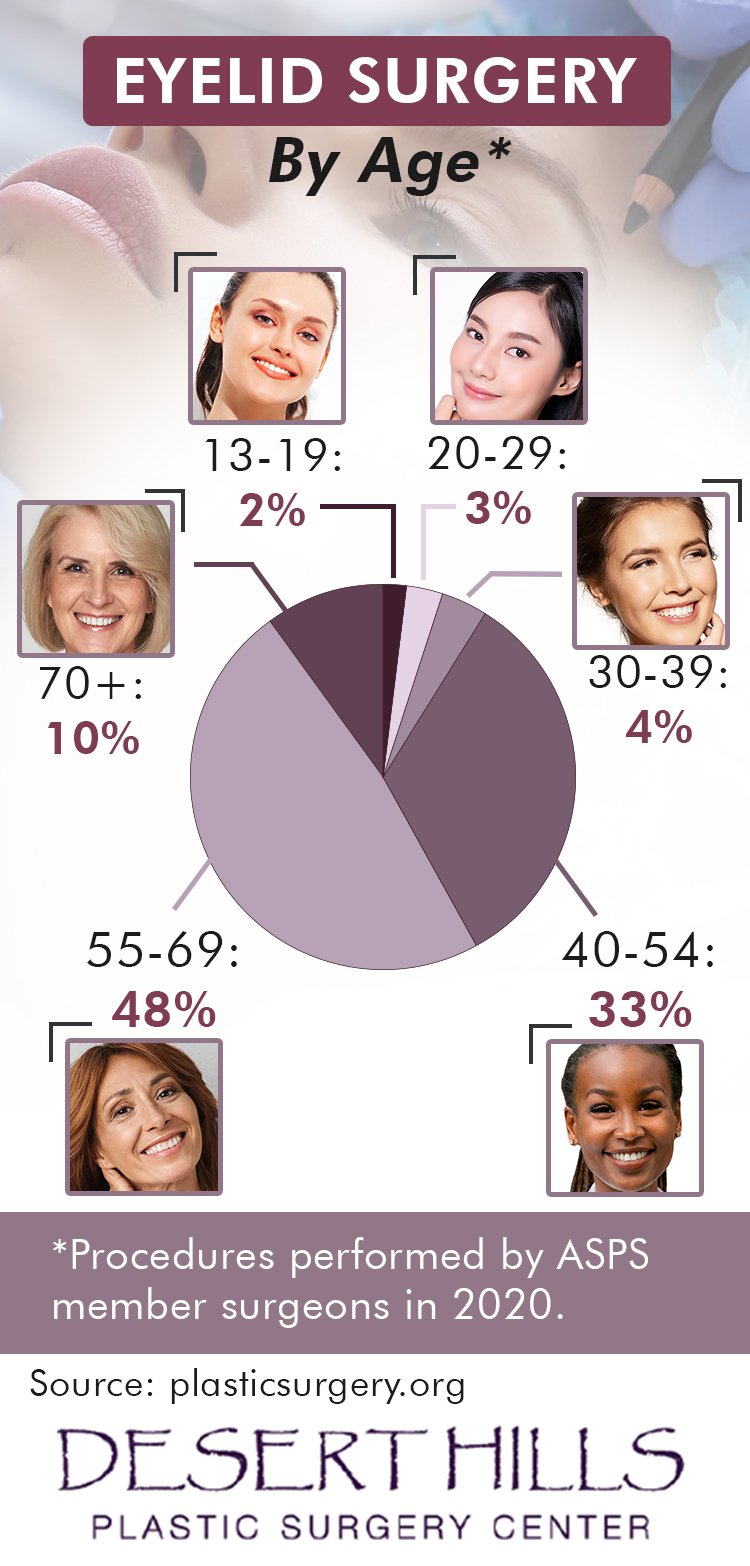
What Should I Expect From My Results?
You may see an immediate improvement in the appearance of your eyelids. However, it will take time for bruising and swelling to fade after surgery. That is when your final results will be visible. Eyelid surgery results can last upwards of 10 to 15 years. Know that your skin will continue to droop and age over time. However, you will likely look better than if you never had surgery.
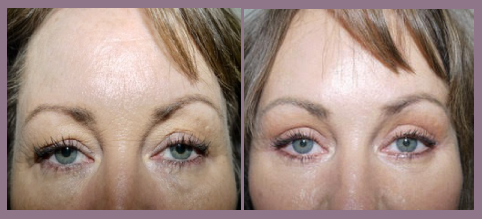
How Long Does It Take To Recover From Eyelid Surgery?
- Mild discomfort is relieved with oral pain medication. Ice compresses are used intermittently for the first 24-48 hours for comfort and to reduce swelling and bruising
- You must sleep with your head of bed elevated for the first week after surgery to keep swelling and bruising to a minimum. No bending over, lifting, exercise, or straining the first week
- Temporary eye dryness and tightness is to be expected for 2 weeks. Maintenance of ocular moisture during this time is important using artificial tears and prescribed ophthalmic ointment
- Sutures are removed in 5-6 days, you may wear makeup afterwards
- Bruising and swelling is variable and unpredictable from person to person. Expect minor bruising and swelling for 7-10 days. Minor asymmetries are to be expected during the healing phase with regard to the amount of swelling, bruising, tightness, and speed of resolution from eye to eye. You should not spend time analyzing this in the mirror
- Most patients return to work within 7 days
- Patients report very little discomfort and ease of recovery
- Patients can resume exercise as tolerated in 2-3 weeks after the procedure
- Light massage helps relax tight lids. Naturalness is usually achieved by 6 weeks
What Are The Alternatives To An Eyelid Lift?
Patients with low eyebrows benefit from Brow Lift surgery. This is commonly done in conjunction with blepharoplasty surgery for a complete and natural looking periorbital rejuvenation.
- Skin care treatments can be performed to improve upon fine lines or crepey skin of the lower eyelid
- Fillers such as Juvederm may be recommended to conservatively fill “tear-trough” depressions which typically involve the lower and medial aspect of the lower eyelid, and contribute to the appearance of dark circles. Botox may be recommended as an adjunct for deep or persistent crows feet lines.
- Weak upper eyelid muscles which cause droopy upper eyelid positions are treated with "Ptosis Surgery," where the muscle, called the levator muscle, is tightened to the upper eyelid. We refer these cases to our oculoplastic colleagues.
- Blepharoplasty surgery is a main component of complete facial rejuvenation surgery which often includes facelift, neck lift, and brow lift surgery in combination with eyelid surgery. With a comprehensive approach, there is one surgery, one recovery, and a uniformly, harmonious result.
Blepharoplasty surgery is a gratifying and straightforward procedure, which predictably improves eye appearance and enhances your best feature. Dr. Brown is precise and conservative with eyelid surgery while ensuring an excellent and often dramatic result.
A refined, natural, "non-operated on" look is essential. Dr. Brown is known for her ability to formulate and execute an individualized surgical treatment plan to account for the variability seen from person to person. Her consistently excellent results enliven and enhance natural beauty that has been there all along. While it is normal to experience continued appearance changes from aging, gravity, environment, and lifestyle, in the majority of cases, the results can last a lifetime.
What Should I Avoid After My Surgery?
After eyelid surgery, you will want to avoid anything that could irritate your eyes or delay healing. That generally includes bending over, lifting, and straining. Put your exercise routine on hold for two to three weeks and resume physical activity as tolerated. Cosmetics are also a no-go at first. Do not wear eye makeup until your sutures are removed, which typically happens five to six days after the procedure.
Keep in mind that sun exposure can darken your surgical scars during your early recovery and should be avoided. Our practice will provide a detailed list of restrictions. Follow these guidelines to avoid complications. Good aftercare will also help you achieve great eye surgery results.
How Long Does the Blepharoplasty Procedure Typically Take?
The duration of a blepharoplasty procedure generally ranges from 1 to 3 hours. It depends on the complexity of the surgery and whether it involves the upper eyelids, lower eyelids, or both.
If you undergo upper or lower eyelid surgery alone, the procedure may take around 1 to 1.5 hours. However, if both the upper and lower eyelids are being addressed, the procedure may extend to approximately 2 to 3 hours.
Several factors can also influence the surgery's duration, such as:
- The surgeon's technique
- The extent of correction needed
- Whether you combine the blepharoplasty with other facial procedures
When you meet with Dr. Brown for a consultation, she will provide a more precise timeline based on her assessment of your condition and goals.
How Soon After Surgery Can I Wear Contact Lenses Again?
Generally, you should avoid wearing contact lenses for at least two weeks following blepharoplasty.
The healing process involves swelling and possible irritation, particularly in the delicate tissues around the eyes. Contact lenses could aggravate these issues.
Once Dr. Brown has determined that your eyes have sufficiently healed, you may gradually reintroduce contact lenses. It's best to start with limited wear time to ensure comfort. Until then, wear prescription glasses to prevent strain on your healing eyes.
Can Eyelid Surgery Correct Asymmetry Between the Eyes?
Yes, blepharoplasty can address asymmetry between the eyes. This is particularly true if the asymmetry is caused by differences in the upper or lower eyelids.
Dr. Brown can tailor the surgery to adjust the position, shape, and amount of excess skin or fat in each eyelid. This helps to create a more balanced and symmetrical appearance.
That said, it's important to have realistic expectations for the procedure. Perfect symmetry is challenging to achieve. Some degree of natural variation between the eyes is common.
Can Blepharoplasty Improve Peripheral Vision if It's Obstructed by Drooping Eyelids?
Blepharoplasty can indeed improve peripheral vision if drooping upper eyelids are obstructing your field of view. This condition, known as dermatochalasis, can cause the upper eyelid skin to sag, which may partially block vision.
Blepharoplasty can significantly enhance peripheral vision by removing the excess skin and tightening the eyelid area. This provides both functional and aesthetic benefits. The improvement is particularly noticeable in cases where the eyelid drooping was severe enough to interfere with daily activities like reading or driving.
Why Choose Desert Hills Plastic Surgery Center?
Choosing Desert Hills Plastic Surgery Center means entrusting your care to Dr. Hayley Brown. She is a top-rated, board-certified female plastic surgeon renowned for her expertise.
Every procedure is also conducted with the highest safety standards in fully accredited outpatient surgery centers. Dr. Steve Brown, a board-certified anesthesiologist and Dr. Hayley Brown's husband, oversees anesthesia for all procedures.
The combination of superior medical expertise, personalized care, and rigorous safety protocols makes Desert Hills Plastic Surgery Center a premier choice in Las Vegas.
Schedule A Client Consultation
Contact Board-certified plastic surgeon Dr. Hayley Brown for more information about blepharoplasty and other facial rejuvenation options by calling 702-260-7707. Our facial plastic surgeon serves Henderson and surrounding areas in Las Vegas, Nevada.

